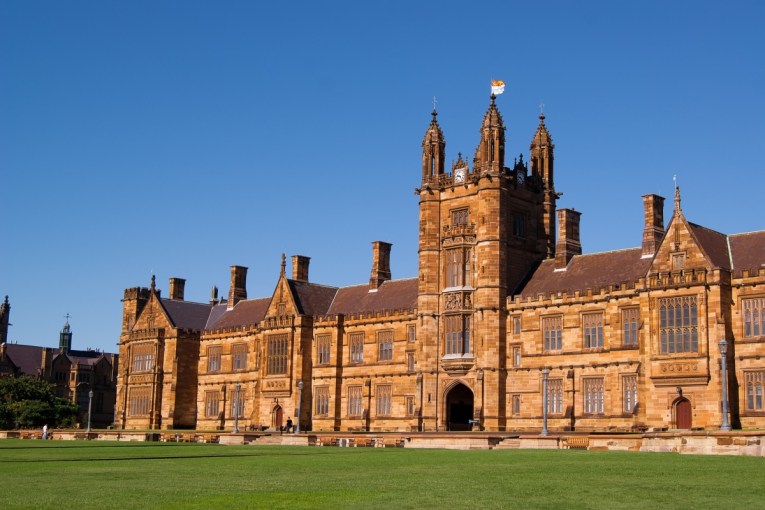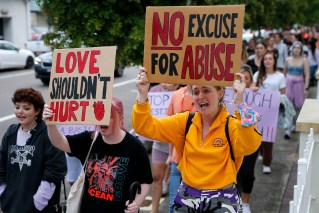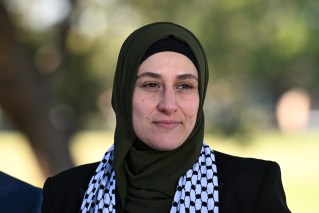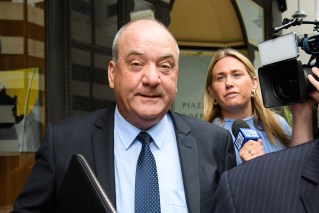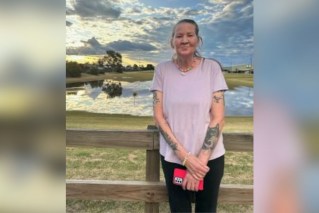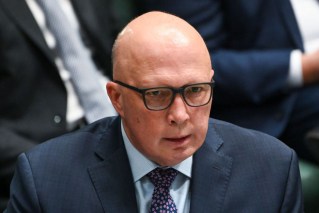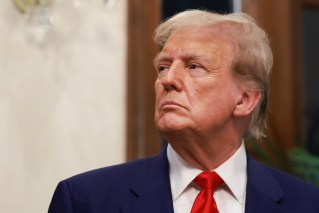A look back: TND’s 10 biggest stories of the past decade

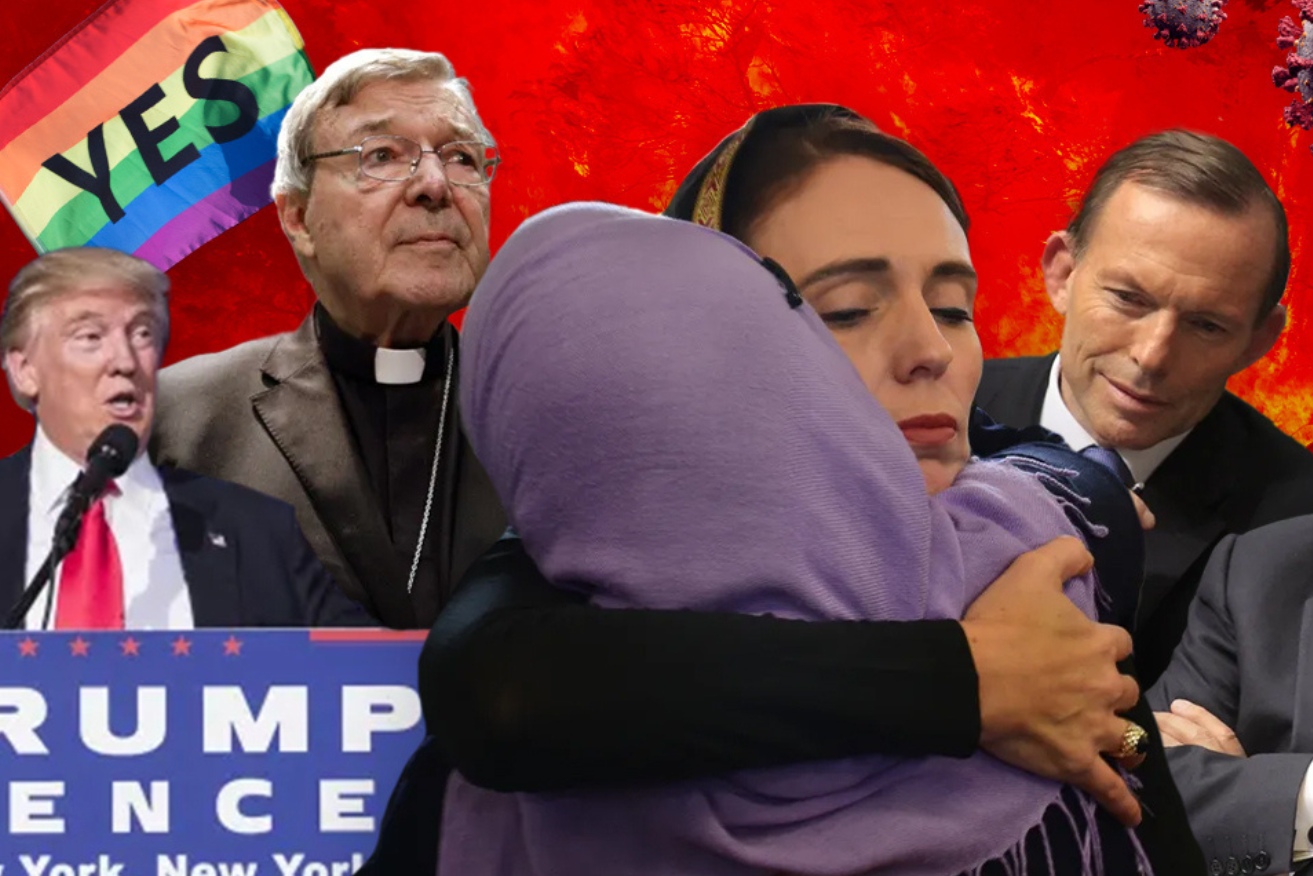
From leadership spills, to shooting tragedies and same-sex marriage history, these are the biggest stories of our first decade. Photo: TND
A 24-hour news cycle can sometimes mean we have short memories.
But some stories are bigger than others.
Over the past decade, since its inception in November 2013, The New Daily has covered everything from terror attacks to political backstabbing to historic votes, all of which have shaped Australia as we know it today.
Here are TND‘s top 10 picks for the biggest stories we’ve covered over our first 10 years.

Hostages pictured holding a flag on the orders of Man Haron Monis. Photo: Twitter
An average Monday morning in Sydney’s bustling Martin Place turned terrifying in minutes when Man Haron Monis, after ordering some tea and chocolate cheesecake at the popular Lindt Café, told café manager Tori Johnson to have all the doors locked so no one could enter or exit.
For hours afterwards, Monis held 18 staff and customers hostage, claiming he was an ISIS operative with explosives in his backpack and at different locations around the city.
Images of hostages forced to hold up flags with Arabic lettering were soon being broadcast around the country. Some were forced to call media outlets to communicate Monis’ demands, which included a live broadcast phone call with Tony Abbott and a public declaration from the government that he was working on behalf of Islamic State (IS).
At different points throughout the event 12 hostages managed to escape before Monis executed Johnson around 2:13am Tuesday morning; this prompted officers to finally enter the café, and the ensuing gunfire killed both Monis and another hostage, barrister Katrina Dawson.
Monis had previously been charged with organising the murder of his ex-wife and numerous counts of sexual assault. He’d also been convicted for sending abusive letters to the relatives of Defence Force personnel who had died in conflict.
Some of his behaviour had prompted investigations by organisations such as Australia’s national security agency ASIO, which had not deemed him an imminent threat.

Turnbull’s rolling of Abbott came years after the latter took the Liberal leadership from the former. Photo: AAP
Australian voters may have hoped the Liberals would provide some stability after a long tug-of-war between Labor’s Julia Gillard and Kevin Rudd.
But those dreams were crushed on September 14, 2015, when Malcolm Turnbull successfully challenged then-Prime Minister Tony Abbott for leadership of the Liberal Party.
A party ballot saw Abbott removed from his position by a margin of 10 votes, 54-44; this was a moment of vindication for Turnbull, who had been ousted as Liberal leader by Abbott in 2009.
During Abbott’s tenure as prime minister, the pair had clashed on issues such as same-sex marriage and climate change policy.
This was not the Liberals’ last leadership spill; in August 2018, Peter Dutton spearheaded a challenge to Turnbull’s leadership, which the latter narrowly won 48–35.
But Turnbull did not get to breathe a sigh of relief, with defections by his supporters and multiple resignation attempts by Liberal Party members over the following days forcing him to call another party room meeting.
Dutton, Julie Bishop and Scott Morrison all vied for the top job, with Morrison emerging the winner of the final round against Dutton with a 45-50 majority.

Donald Trump shocked the world when he won the US presidential election. Photo: Getty
Donald Trump shocked the world to beat Hillary Clinton to become the 45th US president.
This came after a campaign full of mud-slinging, personal attacks and conspiracy theories – a political style Trump brought with him into the White House and maintained throughout his presidential term.
His win came as a surprise to many, especially considering his scandal-plagued campaign and lack of political subtlety or experience; hours before the election, The New York Times forecasted Clinton had more than an 85 per cent chance of winning the presidency.
Trump’s win also put the Republican Party in an extremely powerful position, giving it control over the US Senate, House of Representatives and the presidency.
His time in office was watched closely by the world, and barely a day went by when Trump didn’t make headlines.
His presidency involved impeachment trials; the #MeToo movement; a trade war with China; a potential war with North Korea; endless Twitter posts; America’s withdrawal from the Paris Agreement; and a White House insurrection, among many other controversies.

Crossbenchers Cathy McGowan, Adam Bandt and Andrew Wilkie celebrate the passing of the bill. Photo: AAP
After decades of campaigning by the LGBTQI+ community and its supporters, December 7, 2017, saw Australia join 26 other developed nations in abolishing one of the last legal discriminations against the gay community.
On December 9, the Marriage Act 1961 was updated to allow for marriage equality: It now defines marriage as “the union of two people to the exclusion of all others, voluntarily entered into for life”.
“This reform is a gift that we’re all here give to the next generation, a gift of equality and inclusion, for them to build a better Australia from,” prominent LGBTQI+ rights campaigner Rodney Croome said.
This came after 61.6 per cent of Australian voters responded ‘yes’ to a national survey asking: Should the law be changed to allow same-sex couples to marry?
The survey itself was controversial; many campaigners for same-sex marriage vocally opposed the plebiscite, which they said had put the LGBTQI+ community through unnecessary stress when parliament could have simply voted on the legislation instead.
While some couples were granted exemptions to the one-month waiting period following the passing of the legislation, the first official day for same-sex marriage ceremonies in Australia was January 9, 2018.
Some couples even rushed to tie the knot at midnight, and by the first anniversary of the ‘yes’ vote, 5365 same-sex couples had married in Australia.

The rush to save members of the ‘Wild Boars’ soccer team captured the world’s attention. Photo: AAP
On June 23, 2018, 12 members of a Thai boys soccer team and their coach got trapped in Tham Luang Nang Non cave by torrential rain.
After several days of searching by a contingent including Australian Federal Police officers with cave diving experience, the boys (ages ranging from 11 to 16) and their 25-year-old coach were found.
While the discovery of everyone alive and relatively well was cause for celebration, next came the hard part: Getting them all out.
The complexity of the tunnels leading from their cave, along with the possibility of further flooding due to monsoonal rains, meant the boys and their coach faced a very real threat of remaining underground for months before they could safely make their way out.
The evacuation of the trapped boys began on July 8, and by July 10, the boys and their coach had been saved, with each undertaking a risky 8-hour long journey that had required last-minute swimming and diving lessons beforehand as well as sedatives to keep them calm during the trip.
Unfortunately, the rescue mission was not without casualties; former Thai Navy SEAL Saman Gunan died after losing consciousness while returning from laying down oxygen tanks along the cave’s exit route, and Thai Petty Officer Beiret Bureerak later succumbed to a blood infection contracted during the rescue operation.

Jacinda Ardern was praised for her compassionate response following the attack, along with her swift gun law reforms. Photo: AAP
Almost two years after moving to New Zealand from Australia, Brenton Tarrant – who had not been on any terror watch list in either country – began live-streaming through a helmet-mounted GoPro he was wearing (along with a bulletproof vest and military-style camouflage clothes).
At 1:40 pm he walked towards the Christchurch mosque, Masjid an-Nur, and began shooting worshippers entering the building for Friday prayers.
After shooting his way through the mosque and the immediate area, he drove to the nearby Linwood Islamic Centre and continued to shoot at worshippers until he was down to one rifle.
He then began driving to Ashburton Masjid to continue his terrorist attack before being apprehended by New Zealand Police.
Fifty-one people died as a result of the two shootings; the oldest victim was 77 years old, and the youngest was three years old. Another 40 people suffered gunshot injuries, many with severe consequences.
Within weeks of the attack, New Zealand banned military-style semi-automatic weapons, assault rifles and some gun parts, and enacted further gun reforms in 2020.
The shooter was sentenced to life without parole in 2020, a sentence he appealed in 2022.
Since New Zealand’s then-prime minister Jacinda Ardern vowed never to say the name of the terrorist, instead preferring to remember the names of the victims, the shooter’s name has customarily been restricted to one or no mentions in local news articles.

Police escort Cardinal George Pell from Melbourne Magistrates Court in 2017. Photo: AAP
The Catholic cardinal, who hailed from Ballarat, Victoria and worked his way up to become a senior member in the Vatican hierarchy, was charged with multiple historical child sex offences in June 2017.
Pell strongly denied the allegations, and the first trial for his alleged crimes were conducted under a shroud of secrecy due to a suppression order put in place over fears the outcome would colour the decision of Pell’s next trial, which did not end up going ahead.
The initial trial was declared a mistrial in September 2018, with the jury unable to reach a unanimous or majority verdict, but the subsequent retrial found him guilty of five charges: One for penetration of a child under 16, and four of indecent assault involving a child under 16.
The alleged attacks on the young boys occurred in 1996, just months after Pell was appointed Archbishop of Melbourne.
Pell’s guilty verdict was made public in February 2019, and he was later sentenced to six years prison with a non-parole period of more than three years.
In 2020, the convictions were thrown out on appeal, with Pell walking free after 400 days in jail as seven High Court justices concluded there was a “significant possibility” Pell was innocent because “the evidence did not establish guilt to the requisite standard of proof.”
Pell died on January 10, 2023. Even in death he proved to be a polarising figure, with his Sydney funeral service attracting hundreds of protestors and supporters.

The prime minister’s ukelele performance was deemed tone-deaf following his trip to Hawaii during the 2019 bushfires. Photo: Channel Nine
The 2019-2020 bushfire season was one of Australia’s worst ever, with record-low rainfall, record-high temperatures and abundant dry vegetation forming a particularly flammable recipe.
By February 18, 2020, more than 10 million hectares of land had burned; this was greater than the area burned in the 2009 Black Saturday and 1983 Ash Wednesday bushfires combined.
But in the midst of some of the worst of the bushfires in December, then-prime minister Scott Morrison pulled a disappearing act.
While his office was tight-lipped on his whereabouts, TND revealed Morrison had jetted off on a family trip to Honolulu, Hawaii – despite his office previously insisting reports the Prime Minister was holidaying in Hawaii were “wrong”.
(The story later won former TND political editor Samantha Maiden Scoop of the Year at the 2020 Walkley Awards.)
Morrison’s absence left some Australians seeing red, especially given his perceived lack of action on climate change.
After firefighting crews suffered deaths and injuries while battling blazes, Morrison cut his trip short, but defended his holiday.
“[Australians] know that, you know, I don’t hold a hose, mate, and I don’t sit in a control room,” he told Sydney Radio 2GB.
“That’s the brave people who do that are doing that job. But I know that Australians would want me back at this time out of these fatalities. So I’ll happily come back and do that.”
The incident haunted Morrison’s tenure as prime minister, and he was mocked for playing the ukulele – an instrument heavily associated with Hawaii – during a 60 Minutes segment while campaigning for a second term in 2022.

WHO director-general Tedros Adhanom Ghebreyesus announces the pandemic declaration. Photo: AAP
With more than 118,000 known cases across 114 countries, and following more than 4000 deaths, the World Health Organisation (WHO) announced COVID-19 could be “characterised” as a pandemic on March 11, 2020.
This came more than a week after the Australian government had publicly predicted this result and announced a health emergency response plan.
What came next resembled scenes from a movie, with the world effectively shutting down in an attempt to curb the spread of the virus.
For Australia, this took the form of a ban on mass gatherings with more than 500 participants (leading to the cancellation of events such as the Melbourne Comedy festival and Sydney Royal Easter Show) and a warning to avoid unnecessary international travel (a travel ban on visitors from China had already been in place).
All of this just on March 13, when Australia had just 156 known COVID cases.
International travel was soon banned, followed by interstate travel as states and territories enacted various levels of restrictions in the face of ballooning case numbers.
Victoria undoubtedly went through the toughest ordeal in the country, undergoing more than 260 days of strict stay-at-home orders on-and-off over the following couple of years.
Australia fully re-opened its borders in February 2022, but the fallout of the pandemic has continued to affect everything from loads on hospitals to car prices.

Two (very different) icons passed away in 2022. Photo: Getty/AP
Australia was rocked by Shane Warne’s sudden death in early 2022.
The King of Spin had been in the midst of a vacation with friends on Thai resort island Koh Samui when he was found unresponsive.
Named one of the five greatest cricketers of the 20th century when he was still midway through his career, the Australian sporting legend was rushed to hospital where he was pronounced dead at 52, likely due to a heart attack.
Tributes immediately flowed from loved ones, celebrity friends and fans, and Warne’s body was flown home for a private funeral, which was held ahead of a state funeral offered by the government and attended by more than 55,000 people.
The year proved to be a major one for high-profile deaths, as Queen Elizabeth II passed away at age 96 in September.
Britain’s longest-reigning monarch died surrounded by family at Scotland’s Balmoral Castle after suffering “episodic mobility problems” which forced her to withdraw from nearly all public engagements in the months prior.
Her cause of death was listed as “old age”.
After her body was returned to London, at least 250,000 people joined an international headline-making queue to see the Queen’s coffin lying in state for four days in Westminster Hall.
The Queen’s passing left her eldest son, Charles, to ascend to the throne. He was formally crowned alongside his wife, Camilla, on May 6, 2023.










